Do you know how to build a steel structure factory?
In the process of industrialization and modernization, steel structure factory has become the preferred building form for factories, warehouses, and logistics centers due to their high strength, fast construction, and controllable costs. But how to scientifically plan and efficiently construct a steel structure factory that meets the standards? This article will elaborate on the key points of the entire process from design to acceptance, and analyze the key value of selecting a professional steel structure supplier.

Analysis of the entire process of steel structure factory construction
1. Preliminary planning: precise positioning of requirements
- Site analysis: Evaluate terrain, geological bearing capacity, and climatic conditions (such as seismic zones and typhoon areas requiring strengthened seismic and wind resistant design).
- Functional positioning: Clarify the purpose of the factory building (production workshop/warehousing/cold chain logistics), determine the load requirements (crane tonnage, equipment vibration coefficient).
- Compliance review: Compliance with local building codes (such as fire rating, seismic fortification intensity) and environmental requirements (such as drainage and sound insulation).
2. Structural design: Balancing efficiency and safety
- Main frame: H-shaped steel columns and steel beams are connected by welding or high-strength bolts to form a stable frame (with a typical span of 60-100 meters).
- Enclosure system: Paired with EPS sandwich panels or rock wool sandwich panel walls, it balances insulation, sound insulation, and waterproofing performance.
- Node optimization: For large-span factory buildings, it is necessary to design purlins, support systems, and corner braces to distribute loads and improve overall stability.

3. Material selection: Balancing quality and cost
- Steel selection: Q355B low-alloy high-strength steel is selected as the main material, with better corrosion resistance than ordinary carbon steel; Galvanized layer thickness ≥ 80 μ m prolongs service life.
- Connection standard: The bolts must comply with the GB/T 3632 standard, and the welds must pass UT inspection to ensure node strength.
4. Construction process: Industrial construction mode
- Prefabricated processing: Factory cutting, drilling, and welding of components, with errors controlled within ± 2mm, reducing on-site workload.
- Foundation construction: pour concrete independent foundation or pile foundation, embed anchor bolts, and hoist steel columns after the curing period is completed.
- Main lifting: Assemble in sections using a truck crane or crawler crane, and install purlins, roof and wall systems simultaneously.
- Mechanical and electrical integration: Reserve ventilation, fire protection, and power pipeline channels to achieve seamless connection between civil engineering and equipment installation.
5. Acceptance and maintenance: ensuring long-term benefits
Quality inspection: weld seam testing, bolt tightening force testing, load testing (such as uniformly distributed live load on the roof ≥ 0.3kN/㎡).
Anti corrosion maintenance: Regularly inspect coating damage, spray anti rust paint or repair galvanized layer, and extend service life to more than 30 years.
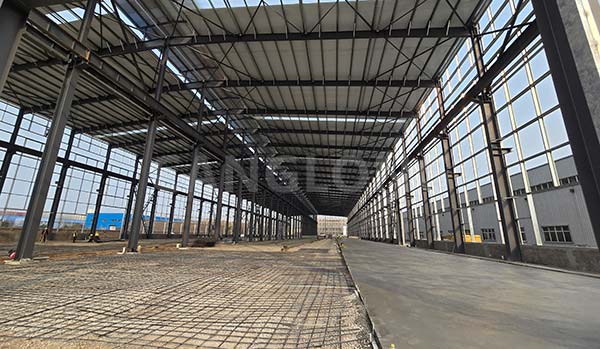
The 3 core values of choosing a professional steel structure supplier
Technical empowerment: Shorten project duration by over 40%
A professional team adopts BIM modeling to optimize node design, and standardized components achieve on-site “modular assembly” to avoid rework delays.
Cost controllable: Material waste rate<5%
Factory prefabrication reduces on-site cutting losses, and the steel recycling rate reaches 90%, reducing the total lifecycle cost.
Risk avoidance: Full process warranty service
Provide structural safety calculation sheets, construction drawing reviews, and a 10-year warranty to avoid design defects and construction hazards.
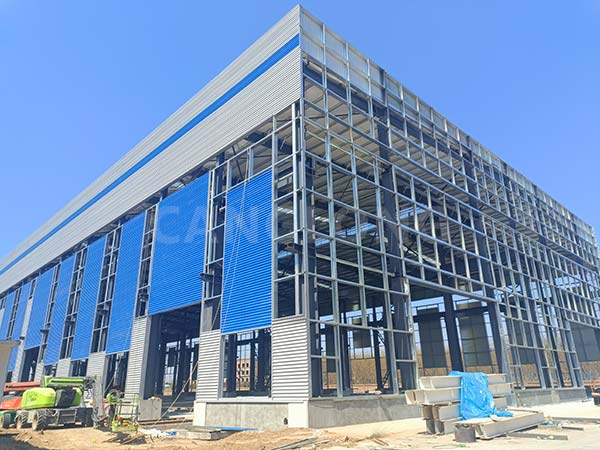
Four major application scenarios of steel structure factory buildings
Manufacturing industry: adapted to large-span needs such as heavy machinery workshops and automotive assembly lines.
Cold chain logistics: The thermal conductivity of the sandwich panel is ≤ 0.03W/m · K, combined with a polyurethane insulation layer to ensure a constant temperature storage environment.
New energy factory: Lightweight structure quickly adapts to photovoltaic bracket installation, shortening the production cycle of clean energy projects.
Emergency facilities: Modular steel structures can be used to build temporary hospitals or disaster relief material warehouses within 72 hours after a disaster

Conclusion
Building an efficient and safe steel structure factory requires scientific design as the foundation, industrial construction as the support, and professional services as the guarantee. Choosing qualified and experienced steel structure suppliers can not only avoid technical risks, but also achieve cost reduction, speed up, and quality improvement through standardized processes. If you need customized factory solutions or free technical consultation, please feel free to contact Canglong Group!
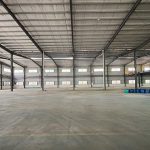


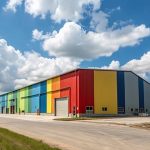
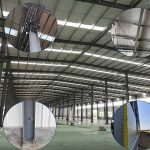

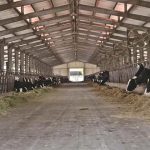

Send us the inquiry form